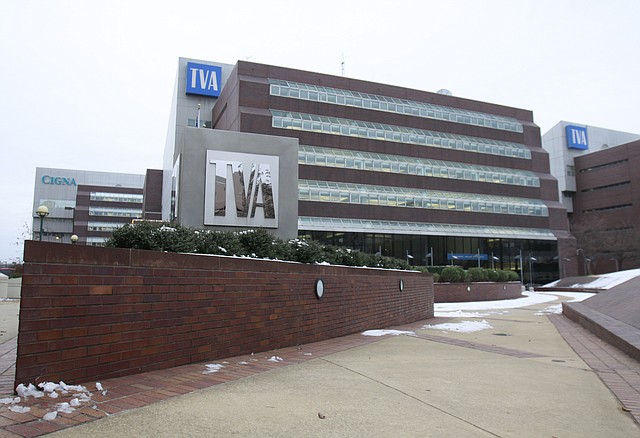TVA, contractor sign letter for pre-fab reactors
Friday, June 17, 2011
TVA has signed a letter of intent with a contractor to design, license and build six prefabricated nuclear reactors to be sited at the former Clinch River Breeder Reactor site in Roane County.
And recent correspondence with the Nuclear Regulatory Commission indicates the utility by 2020 may site 10 to 12 of the small modular reactors, called SMRs, which never before have been licensed.
The reactors - each capable of producing about one-tenth the power of a large, traditional nuclear reactor - would be the first "commercially viable" small nuclear plants, according to Babcock & Wilcox, the contractor.
TVA Chief Operating Officer Bill McCollum is quoted in the Babcock & Wilcox news release about the letter of intent.
"Successful deployment of small reactor technology will increase the options available for clean, reliable and safe power generation," McCollum said in the release.
But some critics are saying that once again Tennessee and its ratepayers may be guinea pigs, and TVA and the nuclear industry, to keep costs down, are pressuring the NRC to shortcut safety concerns.
Last week, Ed Lyman, senior scientist for the Union of Concerned Scientists, told the U.S. Senate Committee on Energy and Natural Resources that the smaller reactors will not be safer or less expensive than traditional reactors.
"Given that there is no apparent capital cost benefit for SMRs, it is not surprising that the SMR industry is seeking to reduce operating and maintenance costs by pressuring the Nuclear Regulatory Commission to weaken certain regulatory requirements," Lyman told the committee during a hearing about Senate bill 512, the Nuclear Power 2021 Act.
The bill would require the secretary of energy to develop and demonstrate two small modular nuclear reactor designs.
TVA spokesman Ray Golden said Thursday the letter of intent is not a contract, and he said there is no firm cost estimate on the proposed small reactors yet.
Who pays?
Oak Ridge National Laboratory is next to the Clinch River site and would be one of the primary customers for its electricity. The laboratory faces a deadline to obtain green power, but it needs much less power than a large nuclear plant would provide.
Senate bill 512 specifies that 50 percent of the design funding and 75 percent of the building cost must be nonfederal.
It's unclear how TVA, Oak Ridge National Laboratory and the NRC - all federal agencies - would pay for the bulk of the costs.
"TVA and Generation mPower [the Babcock & Wilcox subsidiary that will design, license and build the reactors] are looking at cost-sharing opportunities," said TVA spokesman Terry Johnson.
That cost-sharing may come from ratepayers or from negotiations with the Department of Energy. Or the Senate bill may be adjusted, Golden and Johnson said.
Reactor cost estimates usually are computed by finished kilowatt capacity. A new large plant would produce about 10 times the amount of electricity as one small modular reactor and might cost about $10 billion. Using the kilowatt-cost estimate norm, one SMR might cost in the ballpark of $1 billion, depending upon the design.
Johnson said the letter of intent with Babcock & Wilcox required no money from TVA, but he said the utility's board has approved $2 million for Clinch River site evaluations and environmental reviews.
TVA is expected to submit its license application to the NRC in 2012.
Weighing size and safety
Advocates of small nuclear reactors say their size makes them more useful and efficient in some sites where demand will grow slowly or in isolated spots where long transmission lines drain efficiency.
The plants are largely underground, and so is their spent-fuel storage. And because their size requires less fuel and less refueling, there is less danger in the event of a problem, advocates say.
But Lyman told the congressional committee the Senate bill that pushes small reactors also should provide more stringent and specific safety criteria, not less.
Lyman termed small reactors' advantages as "modest at best."
"On the other hand, unless they are carefully designed, licensed, deployed and inspected, SMRs could pose greater safety security and proliferation risks than large reactors," he told the panel.
He also criticized the idea of clustering the small reactors.
At Japan's Fukushima Dai-ichi plant, he said, nuclear operators seemingly were forced to play "whack-a-mole" as they shifted limited resources from one unit to another as new problems cropped up after the earthquake and tsunami.
Louise Gorenflo, a local anti-nuclear activist, is worried.
"No other utility in the country has stepped forward other than TVA to build SMRs," she said.
"While TVA makes itself very available to the nuclear industry to show its commitment to this untested technology, the public has not yet had one opportunity to engage TVA in a conversation about our safety and other concerns. It feels very strange that TVA is moving rapidly ahead with SMRs as if those who are going to pay for it - the ratepayers - do not matter."
